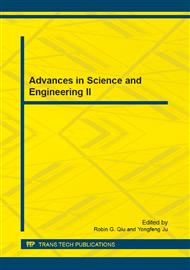p.316
p.321
p.326
p.331
p.336
p.341
p.347
p.353
p.359
Blind Source Separation Method Based on Pseudo-Random Code
Abstract:
According to pseudo noise communication and related characteristics of pseudo-random code, this paper proposed a blind source separation method. The method can separate the different pseudo-code sequence from the pseudo-code wide frequency signal. The method can quickly and accurately isolate and identify the pseudo–code feature of different user, to get the user’s voice or data information, which has good application prospects.
Info:
Periodical:
Pages:
336-340
Citation:
Online since:
October 2011
Authors:
Price:
Сopyright:
© 2012 Trans Tech Publications Ltd. All Rights Reserved
Share:
Citation:


